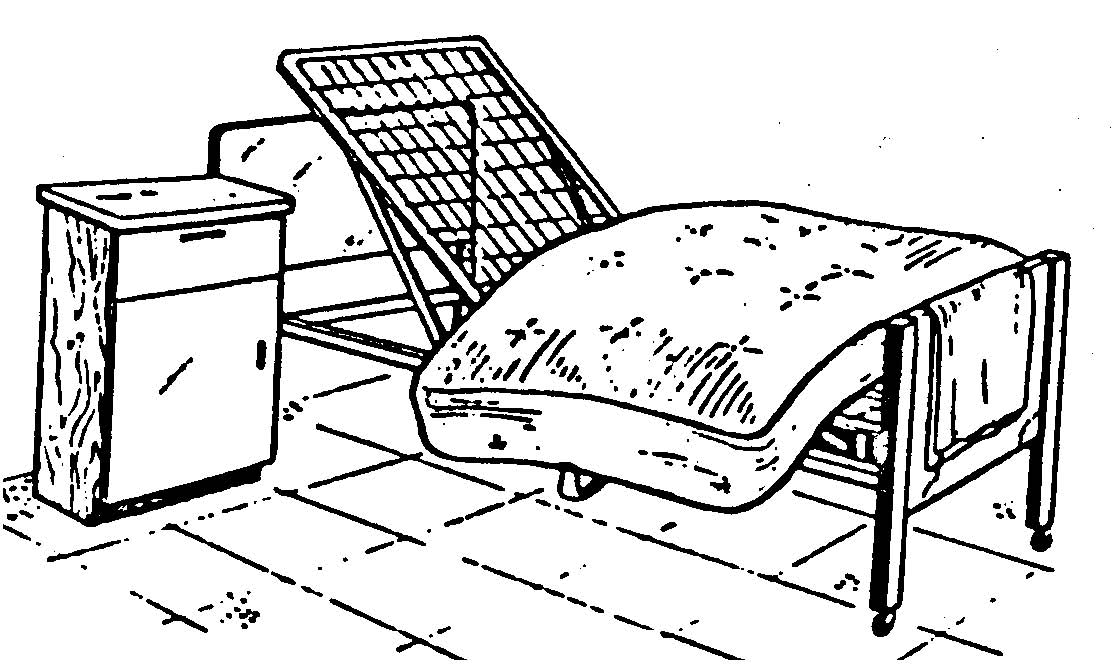Sterile Procedures
LESSON 5: Isolation
5-8
5-8. CLEANING
a. Concurrent Cleaning. Cleaning equipment must be disinfected at the end of each cleaning shift. For example, wiping cloths and mop heads should be laundered and thoroughly dried, dirty water discarded, and buckets disinfected before being refilled.
b. Terminal Cleaning. Terminal cleaning of isolation rooms for isolation areas consists of the following general actions in addition to any specific measures listed in the individual section.
(1) All receptacles (drainage bottles, urinals, bedpans, flow meter jars, and thermometer holders) should be emptied, wrapped, or marked (if indicated), and returned to Central Supply.
(2) All disposable items should be discarded in a wastebasket lined with an impervious plastic bag.
(3) All equipment that cannot be best handled by Central Supply or discarded should be washed with a freshly prepared germicidal detergent solution.
(4) All furniture and mattress covers should be washed with the germicidal detergent solution. Furniture after terminal disinfection is illustrated in figure 5-1.
Figure 5-1. Furniture after disinfection.
(5) All floors should be wet-vacuumed. If wet-vacuuming equipment is not available, floors should be mopped with fresh germicidal detergent solution using a double-bucket technique.
(6) Grossly soiled areas on walls should be washed with germicidal detergent solution.
(7) Disinfectant fogging should not be used. It is an unsatisfactory method of decontaminating air or surfaces.
(8) Airing a room from which a patient has been discharged is not an effective terminal disinfection procedure and is not necessary. The only exception is that if the room does not have an adequate artificial ventilation system or functioning exhaust fan, a 1 to 2 hour airing period with windows open and doors closed may be used before terminal cleaning.
c. Special Instruments. If possible, instruments should be returned to be disinfected or sterilized. They should be either single or double-bagged and marked before they leave the patient's area. All reusable
breathing circuits and humidification devices used with inhalation therapy equipment should be wrapped and returned to Central Supply for reprocessing.
d. Special Procedure Trays. Trays should be separated into component parts and handled as indicated.
e. Isolation Carts. Some institutions use special isolation carts prestocked with all necessary equipment for all classes of isolation or separate isolation carts for each class of isolation. These can be wheeled to the area where a patient in isolation is located. They must be cleaned frequently and kept adequately stocked with all necessary supplies.


